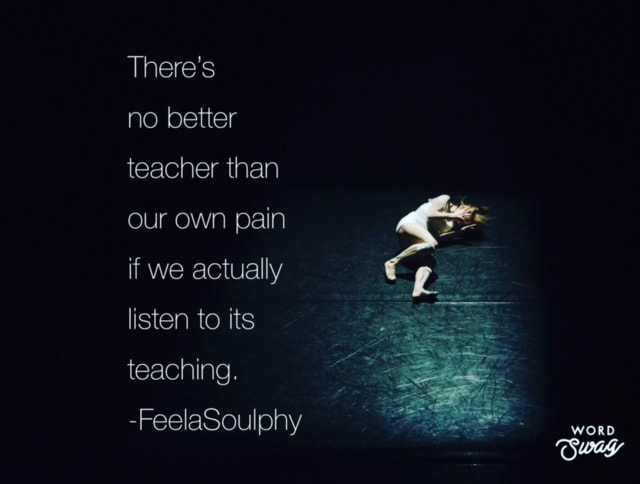|
What if you could tune into the same brainwave frequency as monks during moments of enlightenment? What if insight wasn’t just mental — but divine? This is where Gamma comes in. Often overlooked in everyday life, Gamma is the brainwave state linked to the highest forms of consciousness, the aha! moments that feel like downloads from beyond, and even spiritual awakening. But Gamma doesn’t show up randomly. It’s a state you can prepare for — and invite. What Are Gamma Waves? Gamma brainwaves range from 30 to 100 Hz, the fastest of all brain frequencies. These waves are associated with:
When you experience a sudden epiphany — the kind that changes your life — you’re likely in a gamma burst. It’s your brain creating an instantaneous global connection, fusing memory, insight, emotion, and intuition into one flash of clarity. Gamma in Mystics, Monks, and Moments of Awakening In groundbreaking research, neuroscientists observed elevated gamma activity in the brains of advanced Tibetan monks during meditation. These monks weren’t just calm — they were in a state of profound, expansive awareness. Love-based meditations, in particular, triggered the most powerful gamma waves. These findings suggest that gamma isn’t just about cognition. It may be the neural signature of transcendence — the bridge between the personal and the divine. How Gamma and Alpha Work Together Think of Alpha as the fertile ground. It’s where you relax, open your awareness, and quiet the noise. Gamma is the lightning strike. It’s the moment the insight arrives, fully formed. Together, they form the perfect flow state:
Your goal isn’t to chase Gamma — but to create the conditions for it to arise. Practices That Induce Gamma States You don’t have to live in a monastery to access gamma. These practices have been shown to boost gamma activity and support spiritual downloads: 1. Insight Meditation Rather than emptying the mind, this style focuses attention on a single subject (a question, concept, or sensation) while observing arising insights without judgment. It combines clarity with curiosity — a recipe for gamma bursts. 2. Breathwork Rhythmic or conscious breathing techniques can alter brainwave patterns, especially when paired with emotional release. Gamma often appears after strong somatic breakthroughs. 3. Deep Focus (Flow States) When fully immersed in a creative, intellectual, or physical activity, your brain can enter “flow” — a state associated with both alpha and gamma synchronization. 4. Acts of Love and Compassion Heart-based states (like gratitude, empathy, and unconditional love) elevate not just your mood, but your frequency. Studies show these emotions correlate with increased gamma activity and neural coherence. How to Invite Gamma Into Your Daily Life The more often you create space, the more likely your brain is to deliver insight. Here’s how to build a gamma-friendly lifestyle: Stillness Windows Designate sacred “alpha zones” during your day — no phone, no noise, just presence. These might include:
See more details about Alpha Brainwave in Part 2. Ask Powerful Questions Gamma breakthroughs often follow curious inquiry. Use questions like:
Let the answers come later — in a flash. Final Insight: Epiphanies Are Spiritual Invitations Gamma is more than a brainwave. It’s a state of divine intelligence. It’s when the veil thins… and something greater than you whispers through the neurons. When you get the message, don’t just admire it — act on it. Because real transformation doesn’t happen when you understand something. It happens when you become it. Read: Part 1: The Neuroscience of Epiphanies: Why Sudden Realizations Can Change Your Life Instantly Part 4: The Portal of Dreams - How Theta Brainwaves Reveal Your Soul's Voice
0 Comments
There are many different types of meditation, but the goal is always the same: to achieve a meditative state. Walking meditation is a beautiful practice that not only relaxes your body and mind but can also lead you into deeper states of consciousness, such as Alpha and even Gamma brainwave states, where profound realizations happen. Here’s how to approach it to get the most out of the experience: 1. Choose the Right Trail
2. Minimize Distractions
3. Engage All Six Senses Fully experience your surroundings through:
Take your time. Stop and observe. Take photos if you feel inspired — nature is the ultimate playground for your inner artist. 4. Deepen Presence When you relax into the present moment, your experience of nature intensifies — similar to how senses are heightened under the influence of edibles. One reason for this is simple: full concentration on the now magnifies your experience. The vast majority of nature has never been truly experienced by most humans — not because it isn’t beautiful, but because our attention is often elsewhere. 5. Be Mindful
6. Set Intentions, Not Expectations
7. Cultivate a Childlike Curiosity Children are naturally curious — that’s why they learn so quickly and experience so much joy. Scientists and passionate people share this trait too: they remain curious, which keeps their mind and heart alive. Adopt a spirit of curiosity during your walk — it will deepen your experience and open new doors within you. 8. Try New Sensory Exercises
9. Understand Brainwave States Meditation often aims to move your brain into deeper states:
During walking meditation, you’ll likely move in and out of Alpha and Gamma. Let it happen naturally — never force it. Relaxation comes first. Depending on your current mood and state of mind, it might take 20–30 minutes to start feeling relaxed and present. Once in Alpha:
In both states, you’re much more likely to experience epiphanies and “aha” moments — profound realizations that may even be life-changing. 10. Why Epiphanies Happen Normally, our daily lives interrupt our thoughts constantly. We accumulate fragmented, incomplete thoughts that never fully connect. But when the right environment, relaxation, mood, information, and attention come together, your mind naturally makes connections between those fragments — unlocking wisdom already inside you. (I’ll write more about this important process in a future post.) 11. Pace Yourself
Reminders
Suggested Questions and Prompts for Walking Meditation If you feel called to, you can take one or two reflection questions with you on your walk. You can also allow your intuition to guide you naturally without any set focus. Either way, there is no need to force insights or outcomes—set your intention to stay open, curious, and present, and trust that whatever needs to arise will come in its own time. If you want structure, try asking yourself:
Or simply notice and reflect:
Gentle Tips
Remember, the goal is not to force answers but to create the space where answers naturally arise. Final Thoughts Walking meditation is a beautiful practice of reconnecting—with yourself, with nature, and with the present moment. Each walk will be different. Some days you may feel deeply connected and inspired; other days you may simply enjoy a peaceful stroll. Both are valuable. Trust the process. The more you practice, the more natural it becomes to enter deeper states of awareness. Let nature be your guide, your mirror, and your playground. Walk with presence, curiosity, and an open heart—and allow the wisdom within you to arise when the time is right. Also check out this post about The Healing Power of Nature We May Not Know. When I was 13, I had a history final coming up, but I hadn’t studied the entire semester(the story of my entire pre-college years) Luckily, the teacher gave us a cheat sheet with all the answers—on the condition that we memorized it. The night before, I worked hard to remember everything and woke up early the next day to review while still lying in bed. To my surprise, I recalled everything perfectly and scored an A on the exam later! At the time, I didn’t understand how I could do that other than thinking it was pure luck, so I never tried it again—until a few years ago when I started exploring the science of brainwaves and meditation. I realized that by staying relaxed in the early morning, I had accessed my brain’s alpha state, and with focused review, I had transitioned into gamma, where memory and mental clarity are amplified. This realization led me to develop my morning meditation practice, which helps me access these brainwaves intentionally. Here’s how it works and how you can do it too. What Are Brainwaves and Why Do They Matter? Your brain operates at different frequencies, called brainwaves, depending on your activity and state of mind. Here’s how they work and what they unlock: • Delta (0.5-4 Hz): The deep sleep state essential for recovery and healing. • Theta (4-8 Hz): A dreamy, intuitive state tied to creativity and emotional processing. • Alpha (8-14 Hz): A relaxed, alert state perfect for mindfulness, learning, and calm focus. • Beta (14-30 Hz): Active thinking and problem-solving but also linked to stress. • Gamma (30-100 Hz): A high-performance state of intense focus, learning, and insight—the key to moments of brilliance and breakthroughs. By learning to move through these brainwave states, especially into gamma, you can unlock heightened awareness, creativity, and clarity. The Path to Gamma: Starting with Morning Meditation If you ask any mediators they will tell you that there’s usually a process to get into a relaxed state of mind, such as alpha state, especially meditating in the middle of the day, and it is not guaranteed they’d achieve this state everytime. However, in the morning, often times your brain naturally transitions from delta (deep sleep) through theta (dreaming) into alpha—a relaxed yet alert state. This is the perfect time to guide your mind into gamma for peak mental performance. Here’s how you can do it: 1. Start Relaxed (Alpha State): Upon waking, stay lying down or sit comfortably with your eyes closed. Let your thoughts flow naturally, observing them without judgment. This keeps your brain in alpha, a state of calm focus. 2. Focus on a Subject (Gamma Activation): When a thought or idea feels significant, gently direct your attention to it. Ask yourself reflective questions like: • “What am I feeling right now?” • “Why do I feel this way?” • “How can I better understand or address this?” Dive into the details, exploring the answers with curiosity and depth. This deliberate, focused attention transitions your brainwaves from alpha into gamma, enhancing clarity and insight. 3. Take Notes for Insights: As insights or creative ideas emerge, jot them down. Writing reinforces the sharpness and clarity of the gamma state also allows you to revisit them for contemplation at a later time. Sometimes you may find yourself writing nonstop because your mind is flooded with insights and creative ideas. This simple practice not only fosters self-awareness but also allows you to tap into the gamma state’s power for mental breakthroughs. Why Gamma Is Powerful Gamma brainwaves enhance memory, creativity, problem-solving, and moments of profound insight. They’re where you experience mental clarity and your greatest breakthroughs. This is what we often call “The Zone” or “Flow State” what many top athletes and artists experience when they reach their peak performance. I personally use this method to create more “aha” moments or epiphanies to elevate my perception of the world and to write materials like this. By transitioning into gamma, you tap into the highest potential of your mind. This morning meditation is just one way to reach gamma. In future posts, I’ll share other simple techniques, such as walking and shower meditation, etc. Let me know if you try it and how it works for you. Each person's experience may vary so I'd love to hear your experience working with this technique. Our minds are a complex system of two primary components: the conscious and the subconscious. While they work together seamlessly, each has distinct roles depending on the state we are in—awake, asleep, or meditating. Understanding this dynamic can help us tap into deeper insights and maximize our mental potential. The Roles of Conscious and Subconscious Minds Conscious Mind: • The seat of focus, logic, and deliberate thought. • Active during tasks requiring attention, problem-solving, and decision-making. Subconscious Mind: • A vast memory bank, storing all experiences, emotions, and information. • Operates automatically, running habits, retrieving memories, and processing emotions in the background. How the Two Minds Interact 1. In Daily Life: • When awake and focused, the conscious mind leads, while the subconscious supports by providing background data (e.g., recalling memories or automatic skills). • Example: Driving a familiar route while consciously thinking about other things relies heavily on the subconscious. 2. In Sleep and Dreams: • During sleep, the subconscious dominates, creating dreams by piecing together fragmented memories. • The conscious mind typically takes a backseat unless you experience lucid dreaming, where awareness emerges within the dream state. 3. In Relaxed States: • When relaxed, such as in the alpha brainwave state, the subconscious becomes more active. This is why daydreaming and wandering thoughts occur effortlessly. • The conscious mind shifts to an observer role, which allows for contemplation and creative connections. Meditation: A Bridge Between the Two Minds Meditation offers a unique opportunity to balance the two minds: • The conscious mind quiets down, stepping into the role of a calm observer. • The subconscious becomes more accessible, revealing forgotten memories or making unexpected connections. In this state, insights often emerge because the subconscious processes information in a non-linear way, free from the constraints of conscious logic. Writing down these realizations after meditation ensures they don’t fade away. Epiphanies and Creative Breakthroughs Ever had a great idea seemingly out of nowhere? That’s the result of your subconscious working in the background. Even when the conscious mind moves on to something else, the subconscious continues processing information. When the two minds synchronize, this background processing can deliver surprising insights or solutions. This explains why moments of clarity often occur during relaxed states, like taking a walk, showering, or meditating. The Subconscious as a Memory Bank The subconscious is like a hard drive—it stores everything, but it isn’t always organized. • Dreams, for instance, can feel chaotic because the subconscious tries to link unrelated memories. • Without conscious intervention, it can seem as if the subconscious has “a mind of its own,” creating unexpected scenarios that even surprise us. By taking time to reflect, meditate, or write down these thoughts, we can give structure to this vast storehouse of information. Practical Takeaways 1. Meditate Regularly: • Use meditation to quiet the conscious mind and gain access to subconscious insights. • Don’t try to analyze during meditation—just observe. 2. Write Things Down: • Whether it’s a dream, a random thought, or a moment of clarity, writing helps organize subconscious material for conscious analysis later. 3. Leverage Relaxed States: • Activities like walking, daydreaming, or light meditation allow the subconscious to take the lead. These moments often spark creativity or problem-solving. 4. Trust the Process: • Understand that the subconscious works in the background, even when you’re not aware of it. By consciously creating time for relaxation, you open the door to unexpected insights. Conclusion The interplay between the conscious and subconscious mind is a remarkable system of balance. By learning how to work with both—letting the subconscious process while the conscious observes and organizes—we can achieve greater clarity, creativity, and self-awareness. Did you know your mind is constantly creating stories—narratives so vivid and detailed they feel as real as the world around you? But here’s the catch: not all of these stories are true. Some are distorted memories, others are pure imagination, and many are a mix of both. The mind is so powerful that these stories can shape how you feel, how you act, and even the reality you create. Let’s dive deeper into how this works, why it happens, and what you can do to reclaim control over your mind’s narratives. How the Mind Creates Stories Imagine this: You’re walking down the street, and you see someone you know. They don’t wave or smile back at you. Within seconds, your mind starts spinning: • “Did I upset them? Are they mad at me?” • “Maybe they don’t like me anymore…” What really happened? Maybe they didn’t see you or were distracted, but your brain filled in the gaps with assumptions and emotional stories. This happens because your mind relies on two key sources: 1. Memories: The brain doesn’t store perfect snapshots. Instead, it remembers bits and pieces of past experiences and emotions, which it reconstructs when you recall them. 2. Imagination: When details are missing, the mind fills in the blanks using your thoughts, fears, or expectations. The result? A story that feels real, even though it may not be true. The Emotional Power of Thought Have you ever woken up from a vivid dream feeling angry, sad, or even anxious? Maybe you dreamed a friend betrayed you, and for a moment, it felt so real that you couldn’t shake the emotion. That’s because your brain doesn’t differentiate between real and imagined events when it comes to emotions. When you imagine something, your amygdala (the brain’s emotion center) reacts just as it would to a real experience, producing physical sensations like a racing heart, sweaty palms, or tightness in your chest. For example: • Replaying a past failure: If you keep replaying the time you made a mistake at work, your brain relives the embarrassment, making you feel like it’s happening all over again. • Worrying about the future: Thinking, “What if I mess up my presentation tomorrow?” triggers anxiety in the present, even though the event hasn’t happened yet. Why You Can’t Always Trust Your Thoughts The stories your mind creates can be distorted in several ways: • Memory Bias: Your brain may exaggerate or alter details over time. For example, you might remember a childhood argument as worse than it actually was because your emotions magnified it. • Negativity Bias: You’re more likely to dwell on negative memories or imagined outcomes than positive ones because the brain evolved to focus on threats for survival. • Catastrophizing: Your mind jumps to the worst-case scenario, like thinking your partner didn’t text back because they’re upset with you, when in reality, they may just be busy. These distortions can lead to unnecessary stress, anxiety, and even conflicts with others. Virtualization in the Brain: How It Helps and Hurts Your brain is like a virtual reality machine. It constantly simulates past experiences, imagines future ones, and creates “what-if” scenarios. This ability to virtualize happens in areas like the prefrontal cortex (planning and imagination) and the hippocampus (memory recall). • Example of Help: Picture yourself preparing for a big presentation. You mentally rehearse what you’ll say and visualize yourself succeeding. This boosts confidence and readiness. • Example of Harm: Imagine you’re lying awake at night, replaying a potential argument with your boss. Even though it hasn’t happened, your body reacts with stress as if it’s real, robbing you of peace and sleep. The key is learning to use virtualization for growth, not unnecessary suffering. Reclaiming Control: How to Stop Believing Every Thought Here’s the truth: you are not your thoughts. Your mind is an incredible tool, but it’s also a storyteller that doesn’t always tell the truth. Here’s how to take back control: 1. Practice Mindfulness: When a thought arises, pause and observe it without judgment. For example: • “Is this thought based on fact or assumption?” • “Is this helping me or harming me right now?” Treat your thoughts like passing clouds. You don’t have to grab onto them or believe every one. 2. Use Visualization Wisely: Instead of letting your mind spiral into negative scenarios, consciously visualize positive outcomes: • If you’re nervous about a job interview, picture yourself feeling calm, confident, and answering questions well. • When revisiting a painful memory, imagine yourself learning from it and growing stronger. Visualization isn’t just a mental exercise—it rewires your brain over time, helping you build optimism and resilience. 3. Ground Yourself in the Present Moment: If you find yourself spiraling into “what-ifs,” bring yourself back to the present. Try this: • Take 3 deep breaths, focusing on the sensation of air filling your lungs. • Name 3 things you can see, hear, or feel right now to ground your senses. These simple techniques remind you that the only moment that truly exists is now. 4. Remember: Thoughts Aren’t Facts: Just because your mind says something doesn’t mean it’s true. For example: • Thought: “I’ll fail at this.” • Reality: You haven’t even tried yet. What if you succeed instead? Final Takeaway Your mind is an extraordinary tool, capable of creating detailed stories that can help or hurt you. The key to reducing unnecessary suffering is learning to question your thoughts, use your imagination wisely, and focus on the present moment. The next time your mind tells you a story, ask yourself: “Is this true? Or is it just a thought?” Reclaim your power by becoming the observer of your mind, not its victim. For many, smoking isn’t just about the nicotine—it’s about the ritual. It’s a moment to step away from the noise of life, breathe deeply, and be present. In those few minutes, you might feel calmer, grounded, even centered. In a strange way, it feels like meditation. Here’s the truth: smoking does bring you into the present moment. The act of lighting up, inhaling, exhaling, and watching the smoke swirl engages your senses and momentarily quiets the mind. But here’s the catch—it doesn’t truly heal. Smoking gives temporary relief while harming your body, creating a cycle of dependency. The Science Behind the Calm 1. Dopamine’s Role: Smoking triggers the release of dopamine, the “feel-good” chemical in the brain. This creates a fleeting sense of relaxation and reward, but it also fuels dependency, as your brain craves more nicotine to sustain that effect. Mindfulness practices like meditation can naturally increase dopamine levels without harming your body. 2. Stress Relief or the Pause? Many smokers believe that cigarettes help reduce stress. However, research suggests it’s not the cigarette itself but the act of pausing, breathing deeply, and stepping away that brings relief. This is something you can achieve without nicotine, simply by practicing mindfulness or focused breathing. 3. The Power of Breath: Smoking involves deep inhalation, which mimics diaphragmatic breathing—a proven method for activating the body’s “rest and digest” system. Deep, slow breaths lower your heart rate, reduce blood pressure, and calm the mind. You can achieve these same benefits with intentional breathwork, without the toxic effects of smoking. 4. Breaking the Habit Loop: Smoking often becomes a conditioned response to stress, boredom, or anxiety. It follows the habit loop: cue (stress), routine (smoke), reward (relief). Mindfulness helps break this cycle by increasing awareness of your triggers and replacing the routine with a healthier alternative that still offers calm and presence. A Meditation for Smokers Trying to Quit If you’re looking for a way to replace the act of smoking, here’s a meditation designed specifically for you. It mimics the familiar rhythm of smoking while transitioning to a healthier habit of mindfulness and visualization. Visualization Meditation: “The Peaceful Cigarette” 1. Find a Quiet Space: Sit comfortably, just as you would when preparing to smoke. Hold your hands as if holding a cigarette, and close your eyes. 2. Visualize the Ritual: Imagine yourself lighting the cigarette. Picture it in detail—the feel of it in your fingers, the warmth of the flame. 3. Engage Your Breath: Inhale deeply, as if drawing in the smoke. Hold your breath for a moment, and then exhale slowly, visualizing the smoke leaving your mouth in soft, swirling clouds. Repeat this for the same amount of time it typically takes you to smoke a cigarette. 4. Shift the Imagery: As you continue, begin to change the visualization. Instead of smoke, imagine exhaling stress, tension, or negativity. With each inhale, imagine drawing in calm, healing energy. 5. End in Tranquility: Over time, replace the image of the cigarette with a scene of peace—a serene beach, a quiet forest, or simply a warm, glowing light. Let this become the focus of your meditation. 6. Repeat as Needed: Each time you feel the urge to smoke, return to this meditation. The act of pausing and visualizing will help you retrain your mind and body to associate the need for calm with a healthier practice. Eventually, you won’t need to visualize smoking at all—you’ll go straight to the place of peace. Reconditioning the Brain: How Visualization Helps Quit Smoking The brain is incredibly adaptable and has the ability to recondition itself through new experiences and habits. This process is known as neuroplasticity—your brain can form new neural pathways when you repeatedly engage in new behaviors or mental practices. When you smoke, your brain creates a strong connection between the action (lighting up, inhaling) and the reward (relief, calm). This creates a habit loop in your brain: stress → cigarette → relaxation. But here’s the fascinating part: Your brain doesn’t differentiate between real or imagined experiences. Whether you’re physically smoking or visualizing it in your mind, the brain responds to the signals and creates a similar experience. In your visualization meditation, when you imagine smoking—breathing deeply, exhaling, and feeling that calm—the same neural pathways are activated. However, over time, you can start to replace the cigarette imagery with something more peaceful. Your brain begins to associate the same sense of calm and relief with healthier practices, slowly reprogramming your mind to choose peace instead of nicotine. With repetition, the neural pathways associated with smoking weaken while those tied to relaxation, mindfulness, and tranquility strengthen. Eventually, you won’t need to visualize smoking at all—you’ll simply experience the calm directly, without the cigarette. A Healthier Way to Find Peace What if you could achieve the same sense of calm and presence without the harmful side effects? Imagine this: instead of reaching for a cigarette, you take a mindful pause. You breathe deeply, just as you would when smoking, but now it’s fresh air. You focus on your breath, your body, and the sensations around you. You’re still grounded in the present moment, but now you’re nourishing yourself rather than depleting. Next time you feel the urge to smoke, ask yourself: What am I really craving? Is it the cigarette, or is it the moment of calm? And if it’s calm you’re after, what’s stopping you from choosing a path that heals instead of harms? If you know someone who is trying to quit smoking or could benefit from more mindful practices, please feel free to share this meditation with them. Let’s spread the word of peace and self-care together. We are conscious beings, living unconsciously. We exist as conscious beings, often navigating life's intricacies unconsciously. Embracing consciousness empowers us to shape our experiences, allowing us to actively choose between living a mindful, intentional life or drifting through existence unaware. - Feelasoulphy Choosing forgiveness and letting go teaches a far more impactful lesson than seeking revenge and punishment, demonstrating the power of compassion and understanding. - Feelasoulphy Pain is just another way to increase our awareness of our problems. It’s not the most pleasant way but it can be a very effective way. We are programmed to avoid pain at all cost because we know how it makes us feel. It reminds us not to make the same mistake again in the future. It’s our training wheel before we reach full awareness on our own. Pain also helps us pin point exactly where the problem is for us so we can go straight to the source. It’s a great motivator for change. There’s no better teacher than our own pain if we actually listen to its teaching. - FeelaSoulphy |
AuthorFeelasoulphy Categories
All
Archives
May 2025
|















 RSS Feed
RSS Feed